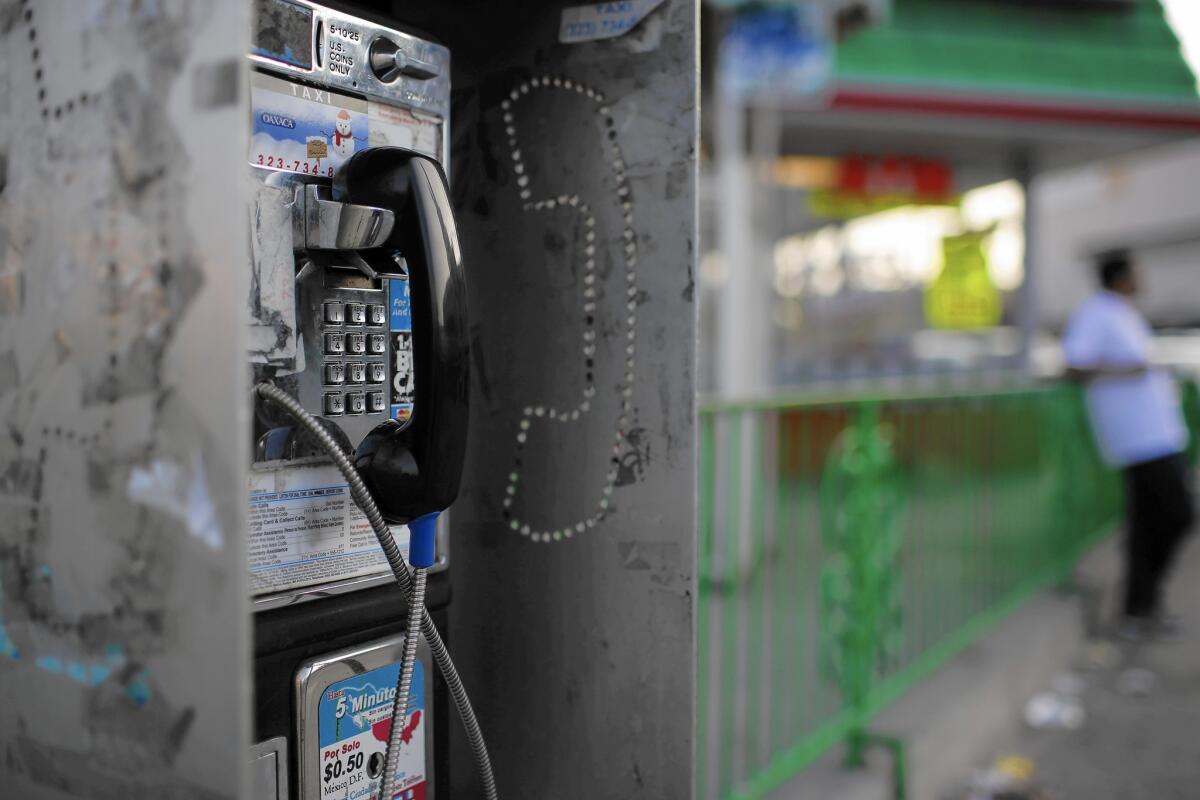Pay phones are relics, but there’s still demand for them

A pay phone at Martin Luther King Boulevard and Crenshaw Boulevard in Los Angeles. Statewide, the number of pay phones has decreased by more than 70% since 2007. But there are still thousands left.
Pay phones, those relics of a not-so-distant past, remain hidden among us, and many of them still work just fine.
They are quickly becoming a rare sight: Statewide, the number of pay phones has decreased by more than 70% since 2007. But there are still thousands left.
In California, there were nearly 100,000 pay phones in 2007. Now there are 27,000.
Victor Rollo, president of the San Diego Payphone Owners Assn., said the decision to keep a pay phone operational is based on profitability. He operates about 150 phones in San Diego.
In some cases, businesses may ask Rollo or another pay phone operator to provide one as a public service.
“There are phones in areas where I know it is needed in the community,” Rollo said, “so I leave them in.”
Rollo said that Spanish speakers are some of his largest customers, but as the costs of cellphones decline, many switch over.
Michael Zumbo, president of the telecommunication firm PTS, said pay phones were a last defense when other forms of communication fail. A natural disaster or terrorist attack could take out cellphone towers, but pay phones would probably continue to work.
“In the old days they were a revenue source, now it’s like a necessity,” Zumbo said.
His firm operates roughly 5,000 phones in California.
Pay phones aren’t very profitable. Operators can decide how much they want to charge, but the going rate tends to be about 50 cents for a local call. Additional costs are added when a call is made outside an area code, but deregulation over the last 30 years has left those decisions to the operator.
Zumbo estimates that if three 50-cent calls are made per day, the phone is making enough money to be sustainable.
Pay phones are subject to inspection by the state Public Utilities Commission. The regulator targets pay phones in areas where they would be most needed: airports, hospitals and remote areas.
Last year, inspectors checked on 4,959 pay phones, and 2,151 had some sort of damage. If phones are found deficient, the owners have to fix them within a certain period of time, and most comply.
daniel.wheaton@sduniontribune.com
Daniel Wheaton writes for the San Diego Union-Tribune.
ALSO
Color codes are bad for measuring terror threats, experts tell Homeland Security
Ex-San Diego officer says department fired him for speaking up about misuse of federal grant
Assistant sheriff credited with curtailing the worst abuses in L.A. County jails is leaving
More to Read
Sign up for Essential California
The most important California stories and recommendations in your inbox every morning.
You may occasionally receive promotional content from the Los Angeles Times.










